Join us for the free Digital Fundraising Summit on 8/25-26 to learn how you can adapt and grow your online marketing & fundraising.
Peer-to-Peer fundraising is an incredibly powerful way to build a sustainable and wide-reaching donations strategy. A well-run p2p campaign can take your event from meh to HOLY MOLY. But there’s the rub: it has to be well-run. Poorly conceived peer-to-peer fundraising can irritate donors and fundraisers alike, plus turn into massive amounts of work for you.
So what can you do to make sure that your peer-to-peer campaign is smooth sailing? We’ve compiled 10 tips to help you build the best peer-to-peer fundraising campaign you can. We promise it’s not hard. It just takes a little bit of planning. And the results? Ooh they’re impressive.
Don’t take our word for it. Floyd Jones is the Director of Fundraising and Community Outreach at Volo City, and he witnessed the power of peer-to-peer fundraising firsthand.
When Floyd was hired on and found CauseVox, he knew it was going to be a gamechanger. “With such a small fundraising team — we needed all the support we could get.”
“Our fundraising is rather diverse…we touch events, we have corporate sponsorships, we have service work, but our peer-to-peer [fundraising] has been the key that’s been exponential in helping us grow,” explained Floyd.
If you want a story like Volo City’s, it’s time to get started! Here are the top 10 ways to raise more with peer-to-peer fundraising.
1. Set Concrete Goals and Time Frames

Your first task is to plan before you launch your campaign. You want to start by creating clear goals, and deciding when this is all going to go down. This will help to motivate your fundraisers and donors by creating urgency and a target to aim for.
Your goals can be the amount you’d like to raise, but it could also be a number of donors or a number of fundraisers. Pick something that makes sense for your organization and that you can connect to impact.
Let’s say you want to raise $7000. How many meals will that provide? How many students will it educate?
Make sure you pick a goal that’s reasonable based on past campaigns, and a time frame that gives fundraisers and donors plenty of time.
2. Choose the Right Tech

“The biggest thing is ease: ease for your fundraisers and ease for their donors. If it’s hard for their donors to make a donation, they’re just going to forget it, leave the page, and move on. CauseVox makes it so simple for donors and for fundraisers. I’ve never had a fundraiser need help setting up a page, it’s that straightforward.”
-Nancy Ramos Girl Scouts of Northern Illinois
The most important decision you make during your peer-to-peer fundraising campaign is which technology you will use. You want to pick technology that is mobile-optimized (after all, mobile giving increase 205% in 2018), and makes the process easy for everyone involved.
You don’t want to spend hours of time on a clunky platform trying to set up your campaign, and you definitely don’t want your fundraisers to get confused and frustrated while setting up their pages. You want something that lets you add your own branding and pre-filled information for fundraisers. It should be quick and easy to create a fundraiser and to donate.
Plus you want a platform that is easy for you before, during, and afterwards: a platform that integrates with the tools you already use (like your CRM), and that has clear and detailed information about your donors and fundraisers.
Did we mention that CauseVox has all of those features and more?
3. Start Before You Start
“Think of the launch of a P2P campaign the same way you would the launch of a capital campaign. You wouldn’t release a campaign to the public to raise $20M for your new building with $0 in the coffers and no backers! So, why take that approach with peer-to-peer?”
-Jake Vermillion Director of Operations, Mortgage Professionals Providing Hope
Now that you’ve started planning your campaign, you’ll want to set the ground work. You don’t want to launch your campaign without some fundraising pages created in advance.
A great place to start is by asking board members or other super supporters to create a page in advance. Maybe those early fundraisers can even start soliciting donations early to give your totals a small boost before you start promoting the campaign.
When new fundraisers visit the page and see that other people are already involved, they’ll be more inspired to join as well.
Another good strategy for a strong start is to ask fundraisers to make the first donation to their own page. This helps every fundraiser bring in dollars, and makes their page look good for other potential donors.
4. Connect with your Fundraisers

“From helping them to see the impact of the work they’re helping to support, to making them feel supported and encouraged, to equipping them to become an effective fundraiser, nothing has yielded better results than assigning “liaisons” (if you will) to each fundraiser who elects to support our cause. While technology can help reinforce a personalized approach, it can’t replace it.”
-Jake Vermillion Director of Operations, Mortgage Professionals Providing Hope
One of the most important positions for a peer-to-peer fundraiser is the person who connects with fundraisers. You want to give your supporters a personal touch. They’re going above and beyond to fundraise for you: you should go above and beyond for them.
The first step in doing that is recruiting your fundraisers one on one. Reach out personally to the people who have supported your organization in the past and ask if they’ll fundraise for you. Don’t be afraid to call or video chat.
Once a fundraiser is on board, make sure that they know exactly who to contact with any questions. There should be a single person who communicates with the fundraisers and provides them with information and support. Ideally, they’ll reach out as soon as a fundraiser signs up to check in and say hello.
Your fundraisers should never feel like they’re doing this on their own. Asking for money can be intimidating and uncomfortable for a lot of people: you want to smooth that path.
5. Give Your Fundraisers All the Tools
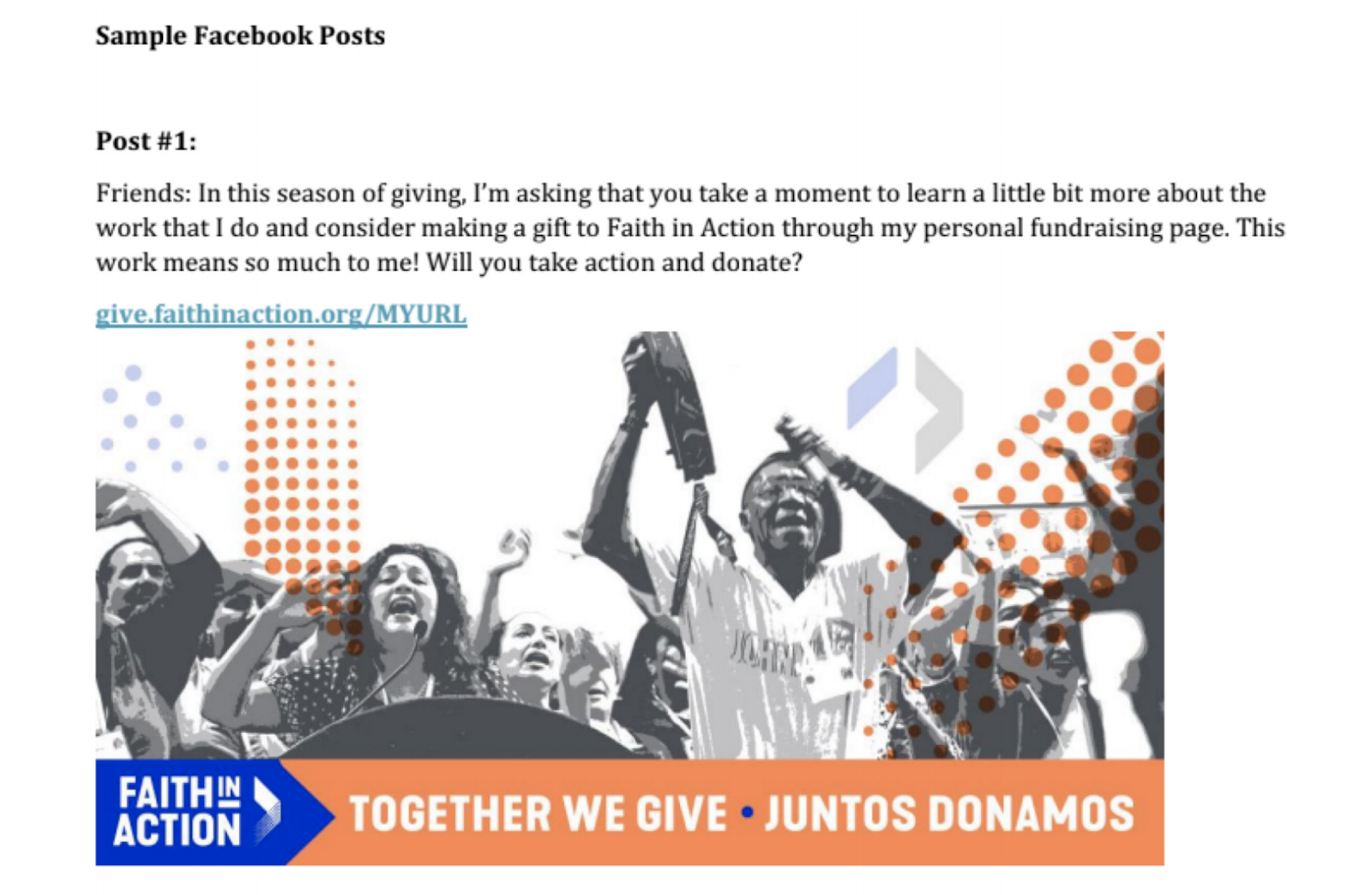
“Be outwardly helpful without being overwhelming. Inform your fundraisers about your cause, your programs, your impact, and so on in simple, easy-to-understand ways.”
-Jay Sissel Founder + CEO Endure to Cure
Once you’ve connected with your fundraisers, you want to make sure that they have all the tools they need, as well as the ongoing support to make the fundraiser their own.
A great way to get all of that information to your fundraisers is to create a peer-to-peer fundraising toolkit. This can include your branding and sample language, a communications calendar, pre-written social media posts and images, email templates, and any other resources that would be important to your fundraisers.
Share this toolkit with each fundraiser who joins you, and feel free to pull elements from it to share on social media or in your email communications.
You may also want to create a training webinar so that your fundraisers can get questions answered. This also gives them a chance to feel more connected with your organization.
6. Highlight Stories

“The best and most effective promotional tactics we use are posts that involve patient stories that come from the patients themselves. They’re telling their story in their own words with quotes directly from them. Then we can say ‘here’s how our organization can help them.’”
-Nick Hudson Director of Development Stupid Cancer
With your fundraisers set up, it’s time to start focusing on the messaging you send to donors. Your messages should highlight stories about one or two people who have been impacted by your organization. People want to hear about your cause, not your organization.
These stories are a great way to showcase the need and impact you are addressing. Create an emotional response that shows the connection between a donor’s gift and the individual who is impacted.
You can build communications that do double duty by creating multi-media stories that are easy to share. By using easily-shareable platforms, you’ll be doing your own communication work and supporting your fundraisers.
Some best practices for stories:
Use a platform that integrates with all types of social media
- Source stories from your community
- Use quotes in your messaging
- Encourage storytelling in multiple mediums
7. Showcase Impact

“Share exactly who benefitted from each person’s fundraising and how. When we can, we even take this to the next level by sharing the story of exactly what child/family is going to benefit from the fundraising (and what assistance they will receive) before the team member starts fundraising. This makes their fundraising ask even easier.”
-Jay Sissel Founder + CEO Endure to Cure
As you highlight stories, one of the most helpful things you can do is showcase the impact that a donation has. According to Charities Aid Foundation, 68% of donors feel that knowing how their donation makes an impact is important to their gift.
You want to tell donors who, what, when, and where: who is benefiting? What will they get? When will they get it? And where will this all take place?
It can be very helpful to provide numbers, like how many people benefited, how many items were provided, or how much time was allotted. That concreteness helps donors to feel important.
One great way to show impact is through donation tiers. When you give suggested amounts to give, and pair each of those amounts with an impact, your donor directly sees how they are making an impact.
8. Use Segmentation
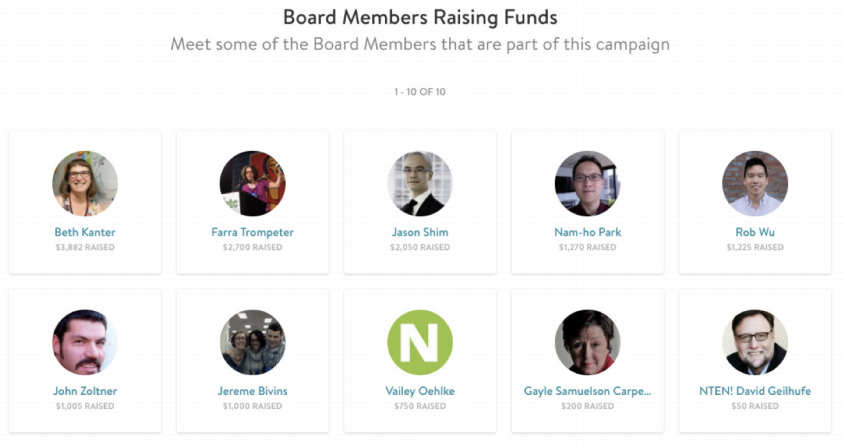
Not all of your fundraisers are going to need the same kind of outreach. That’s why segmentation is one of the strongest tools in your toolbox.
Think about what kinds of messaging you can send to specific groups. Maybe your board members have agreed to fundraise, and you want to send them a challenge to see who can raise the most. Perhaps you can reach out to program alumni and ask for stories or quotes. Volunteers may have a unique perspective, or be willing to serve as fundraisers: it’s great to send a message specifically to that group and let them know how much you appreciate their time.
Consider setting up multiple peer-to-peer campaigns that appeal to each group specifically, or at least sending different messaging to each group to invite them to participate.
9. Do More Than Ask
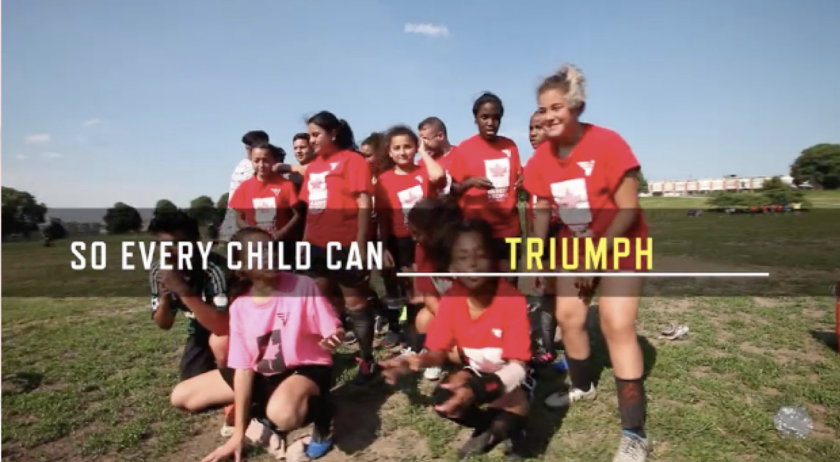
Caption: Volo City Kids Foundation shares on social media what their work helps kids to do.
“The Little Black Dress Initiative campaign is a great way to not only raise funds to support our community efforts, but also a great tool to connect with our community and raise awareness about issues in our community and what our league is doing to eradicate these issues.”
-Rachel Younger, 2017 LDBI Chair for the Junior League of St. Petersburg
Even though you’re running a fundraising campaign, that’s not all you’re doing. You’re also sharing important information about your organization.
As you build your messaging for your peer-to-peer campaign, consider what you can say to your supporters that isn’t an ask for a donation. This should be true across all channels: social media, e-mail, in person, or by phone.
When you include other content that builds community, engages supporters, or provides valuable information, you help donors and fundraisers to understand that you’re on their side. You want to hear from them, and you want to give back to them.
One great example of this is the Walk to End Alzheimer’s. Their Facebook post asking “What is your reason to end Alzheimer’s?” garnered amazing feedback (over 400 shares).
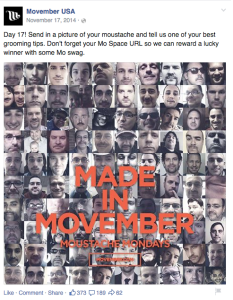
The more you can encourage your followers to respond through questions, discussions, and ideas, the better your content will do. That allows you to reach more people when you do ask.
You’ll want to do some planning to think about what kinds of content will connect well with your supporters: both donors and fundraisers.
10. Share Successes and Celebrate!
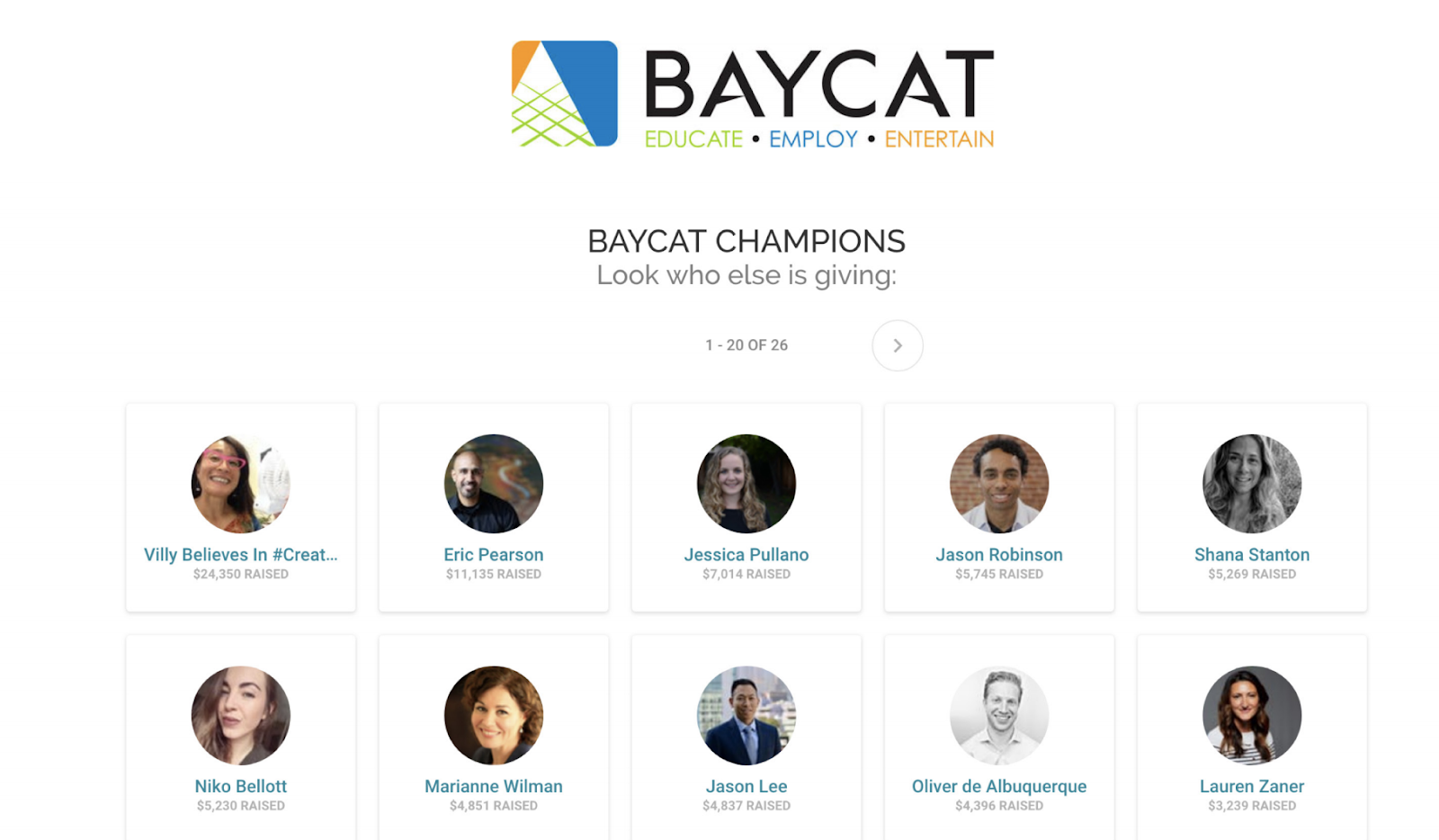
“Your fundraisers are a valuable extension of your brand and your development, so treat them well—and not like a fundraising commodity […] People join your cause because they want to make a positive difference for your programs. Prove the difference they are making and show them how grateful you are for their efforts. Happy, delighted fundraisers will promote you to others and/or stay involved.”
-Jay Sissel Founder + CEO Endure to Cure
The final step to an amazing peer-to-peer campaign is to celebrate! When your fundraisers hit their goals, shout them out on social media. Share the impact of what you’re doing by highlighting success stories. Let your supporters know when you reach your goals.
This may include offering incentives for fundraising (for example a branded t-shirt if someone raises a certain amount), but it can also look like simple celebration and joy with your fundraisers. Sharing their stories and reasons for fundraising on your own channels lets fundraisers feel special and appreciated.
And no matter what you do, make absolutely sure that you thank your fundraisers. They’ve given you their time and effort. You want them to be excited to come back and fundraise for you next time.
Consider developing a fundraiser retention strategy, similar to your donor retention strategy. Do you communicate with your fundraisers throughout the year and let them know what you’re up to? Do you send them thank yous throughout the year?
This is a great place to start building strong relationships.
Raise More With Less Effort When You Run Your Peer-to-Peer Fundraising On CauseVox
If you want to put all these ideas into action, take a look at CauseVox’s peer-to-peer fundraising and get started by setting up your own peer-to-peer fundraising campaign!
CauseVox helps you raise more with less effort, and who doesn’t want that?
Find out how much you can raise, and how much time you can get back with CauseVox.




